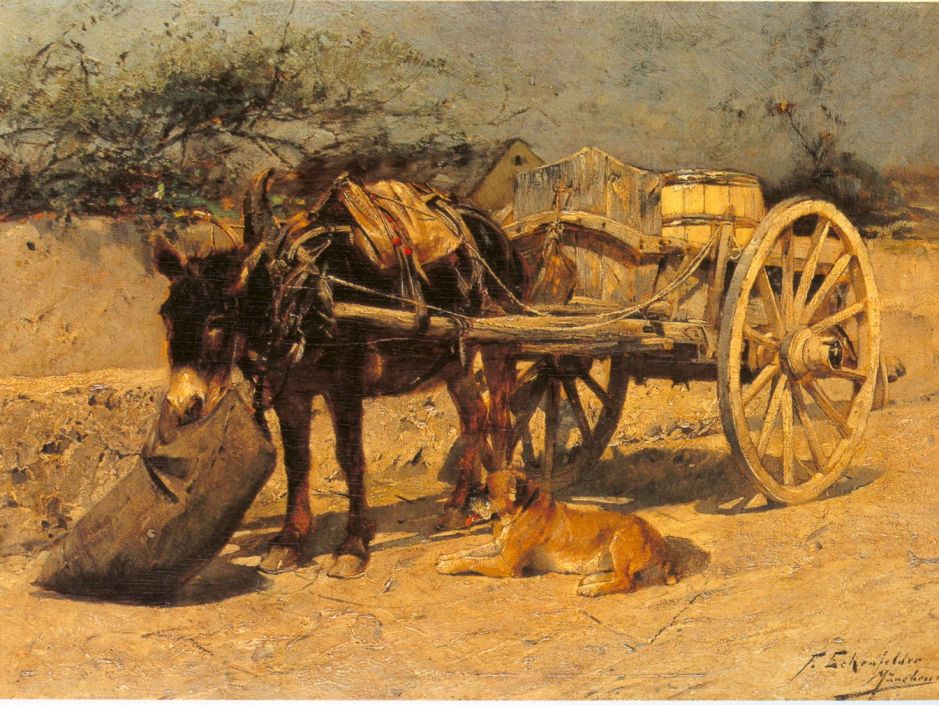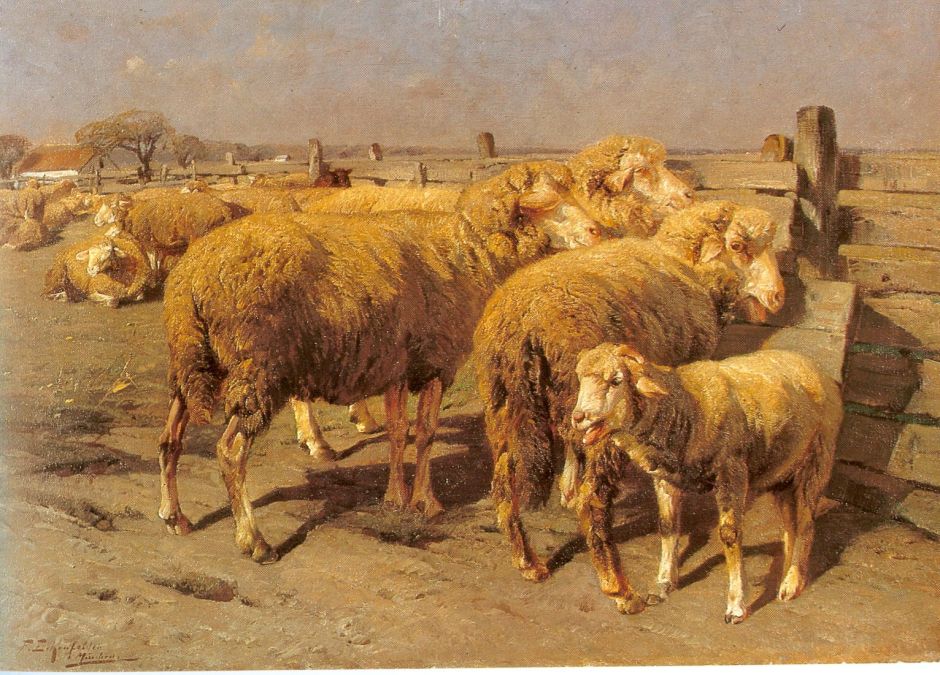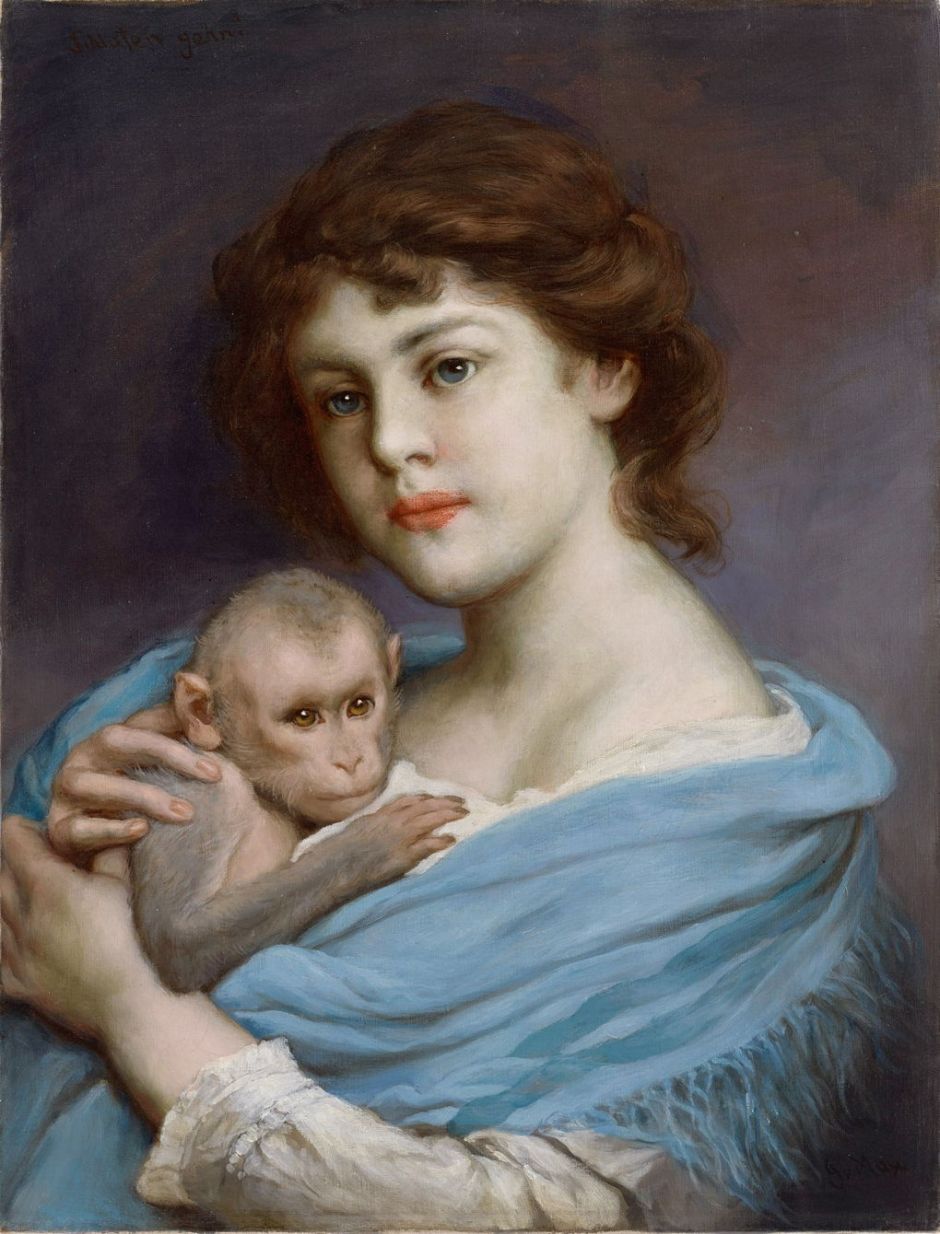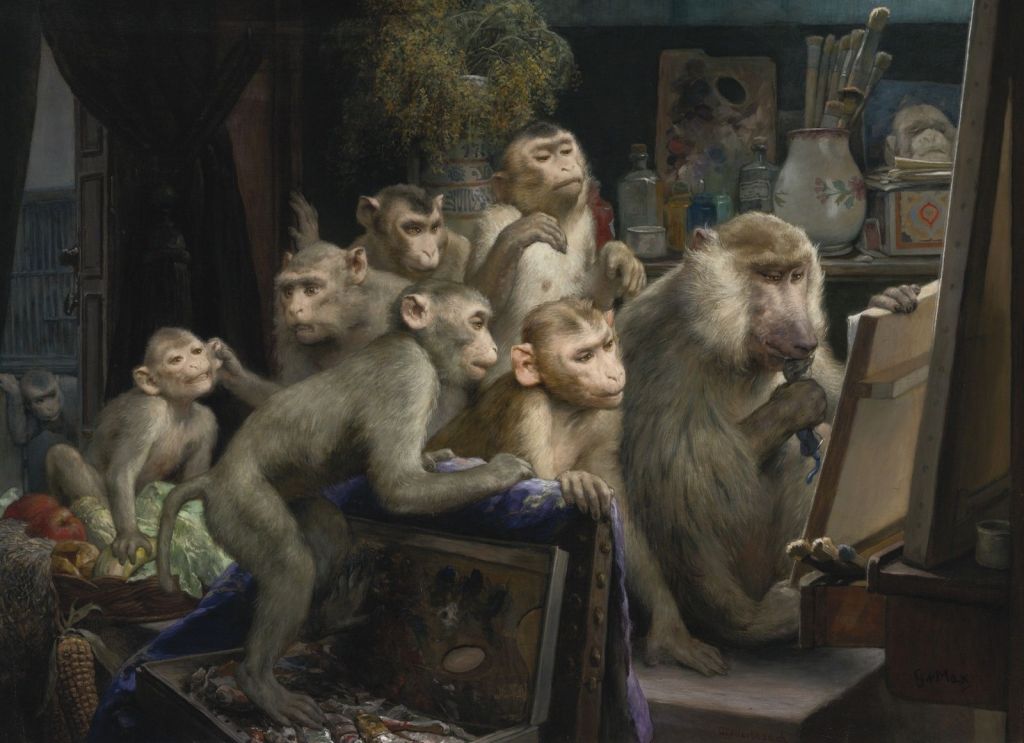In the first of these two articles looking at a selection of paintings of animals by animaliers, I had reached the early nineteenth century, a time when this sub-genre came into its own.
In his early career, Constant Troyon (1810–1865) had been an accomplished landscape painter of the Barbizon School. He only attained international recognition later, when he concentrated on paintings of animals, typically in unusual light.

In his Oxen Going to Work from 1855, we look towards the sun, which casts these oxen into shadow and lights their steamy breath.

Of all his paintings, it’s On the Way to Market (1859) which shows Troyon at his very best. Its melee of sheep, cattle, dog, donkey and horse are outlined by the brilliant sunlight, which combines with the breath of the animals and the dust kicked up by their hooves to create a remarkable shallow-focus effect. This must surely have been inspiration for some of Pissarro’s much later, and equally brilliant, paintings.
Painters had long made illustrations for books about animals, but it wasn’t until the late nineteenth century and the pioneering natural history paintings of Bruno Liljefors (1860–1939) that this became a specialist sub-genre.

Foxes appear in many of Liljefors’ paintings, here A Fox Family (1886) in their role as predators, as they feast on an unfortunate bird. The rich floral setting appears to have been influenced by the paintings of Jules Bastien-Lepage.
Meanwhile, other artists were documenting the final decades of traditional farming and transport.

Sometimes Friedrich Eckenfelder dispensed with humans altogether in his rural paintings, as in his Mule Cart from about 1887.

Some of Eckenfelder’s animal portraits are rich in fine detail: his Sheep in the Pen (c 1890-2), for example, appears to have been the result of long periods of careful work in the studio. In these works, he perhaps referred back to Troyon’s paintings.
Animal paintings found royal favour in Britain, when Sir Edwin Landseer (1802-1873) was a favourite of both Queen Victoria and Prince Albert.

He described this work, The Shrew Tamed (1861), as a portrait of a noted horsewoman, Ann Gilbert, resting her head against the flanks of a horse as she applied ‘horse whispering’ technique to train the animal. However, rumours spread that Landseer’s model hadn’t been Gilbert, but Catherine Walters, the most famous courtesan of the day.
Briton Rivière (1840–1920) kept to safer territory.

Rivière’s Requiescat from 1888 epitomises the faithful relationship between a dog and its master. This is less about the demise of the knight clad in armour than the devotion of his dog, who sits pining by the side of his body.

Many of his animal scenes have whimsical touches of humour. In A Blockade Runner (1888), four dogs are waiting for a cat to try to get out when it stealthily creeps along the top of a wall where they can’t reach.
More exotic species were painted in far-flung empires.

The German animal artist Wilhelm Kuhnert’s Elephants on the Move is one of the first paintings of African elephants that I can find made in their natural environment, when the artist visited German East Africa.
Gabriel von Max (1840–1915) kept and painted monkeys.

His undated A Visit to the Artist’s Studio shows a group of his monkeys watching their leader handle the artist’s paint and brushes in his studio. I suspect that the artist may have supplemented his sketches of the group with some photos, as it appears implausible for the monkeys to have remained in much the same positions for long.

Von Max appears to have had very tender and personal relationships with his monkeys. In Go to Sleep! from 1900, a young woman, possibly his daughter, is nursing an infant monkey who is staring with tired eyes into the distance. Charles Darwin’s book The Descent of Man had been published in 1871, so by this time von Max would have been well aware of the proposal that monkeys and humans had common ancestors.

There were also fine Impressionists, in this case the American Edward Charles Volkert (1871-1935), who took delight in painting cattle on pasture.

